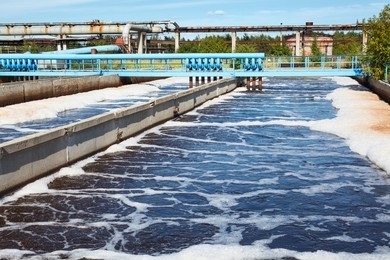To ensure the safety of human drinking water and prevent germs from being introduced into the water supply system, disinfection must be applied to the reuse water in purifying sewage and preparing drinking water. However, while the chlorination of drinking water has been a boon to human health, it has also brought new hazards. The disinfectants used in the disinfection process often react with some natural organic matter (NOM) contained in the water to produce a variety of disinfection by-products (DBPs) that are toxic to humans.

Therefore, Lifeasible has established a solution for disinfection indicators in water, covering a variety of pre-treatment methods and multiple detection methods, allowing simultaneous determination of many samples with high detection sensitivity, low interference, qualitative and quantitative accuracy to meet customer requirements for water sample testing.
Some DBPs are present in water at very low concentrations (e.g., halo acetic acids, HAAS), generally at the μg/L level, so Lifeasible requires pre-treatment such as enrichment prior to detection. We use liquid chromatography, capillary electrophoresis (CE), high-field asymmetric waveform ion mobility spectrometry (FAIMS), molecularly imprinted electrochemical sensor (MIECS), and solid-phase extraction (SPE), solid-phase extraction (SPE), solid-phase microextraction (SPME), liquid-liquid extraction (LLE), liquid-liquid microextraction (LLME), etc. to achieve DBPs separation and enrichment to meet the determination purpose of trace analysis in water.
To avoid bias caused by a single method, Lifeasible usually combines one or more methods for separation, enrichment, and detection to ensure that we provide our customers with highly sensitive and reproducible results.
| ID | Components | ID | Components |
| 1 | Chlorite | 16 | Dichloromethane (DCM) |
| 2 | Bromate | 17 | Tribromomethane |
| 3 | Chlorate | 18 | Bromodichloromethane (BDCM) |
| 4 | Free chlorine residual | 19 | Chlorodibromomethane (Dibromochloromethane) |
| 5 | Monochloroacetic acid (MCAA) | 20 | N-Nitrosomethyl-ethyl nitrosamine (NMEA) |
| 6 | Dichloroacetic acid (DCAA) | 21 | N-Dibutylnitrosamine (NDBA) |
| 7 | Trichloroacetic acid (TCAA) | 22 | N-Nitrosodiphenylamine (NDpha) |
| 8 | Tribromoacetic acid (TBAA) | 23 | N-Nitrosodimethylamine (NDMA) |
| 9 | Bromodichloroacetic acid (BDCAA) | 24 | N-Nitrosodiethylamine (NDEA) |
| 10 | Dibromoacetic acid (DBAA) | 25 | N-Nitrosodi-n-propylamine (NDPA) |
| 11 | Dibromochloroacetic acid (DBCAA) | 26 | N-Nitrosopiperidine (NPIP) |
| 12 | Bromoacetic acid (MBAA) | 27 | N-Nitrosomorpholine (NMOR) |
| 13 | Bromochloroacetic acid (BCAA) | 28 | N-Nitroso-n-phenylmethyl (NDBzA) |
| 14 | Trichloroethylene (TCE) | 29 | N-Nitrosodiphenylamine (NPYL) |
| 15 | Trichloromethane (TCM) | 30 | N-Nitroso-d-iso-propylamine (NDIP) |
The list of detectable components is constantly being updated, please stay tuned.
In addition to the sensory, general chemical, toxicological and microbiological analysis of water samples, Lifeasible's disinfection testing is an essential complement to the analysis of water samples. This allows our customers to perform all aspects of water analysis with high accuracy on Lifeasible's technical service platform. We can always meet your needs, so please contact our staff for a customized solution.
Lifeasible has established a one-stop service platform for plants. In addition to obtaining customized solutions for plant genetic engineering, customers can also conduct follow-up analysis and research on plants through our analysis platform. The analytical services we provide include but are not limited to the following:
Why Do Plants Blush When They Are Hungry?
April 26, 2024
STU-CRISPR System Improves Plant Genome Editing Efficiency
April 19, 2024